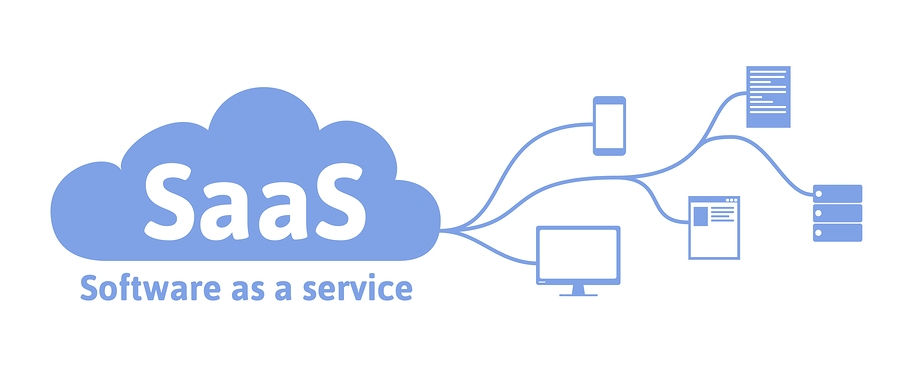When your business is on a low budget, there are probably several functions that are high-priority when allocating funds. Of course, your product team could use some financial assistance, and marketing — especially advertising — could always use a little padding. However, it might seem like a waste to invest money in your customer service team. After all, how can it really improve?
Contrary to popular belief, your customer service team should be just as important — if not more important than — as your other teams. After all, it’s the direct connection between your customers and your business. Still not convinced? Read the following list to understand how essential customer service is to improving your business and relationships with customers.
Investing in customer service helps activate your flywheel because loyal customers will help you acquire new customers, free of charge, by convincing prospects to interact with your brand. And, their positive testimonials will be more effective than any of your current marketing efforts — and cheaper, too.
Aside from that, let’s look at some data-backed reasons why you should invest in your customer service team.
1. Customer retention is cheaper than customer acquisition.
An increase in customer retention of merely 5% can equate to an increase in profit of 25%. This is because repeat customers are more likely to spend more with your brand — 300% more, to be exact — which then results in your business having to spend less on operating costs.
According to research, the Customer Acquisition Cost (CAC) — how much it costs to acquire a new customer — is more for a company that doesn’t invest a small percentage of its budget in customer service. Ultimately, investing in customer service can decrease your churn rate, which decreases the amount you must spend on acquiring new customers and decreases the overall CAC.
2. Customer service represents your brand image, mission, and values.
You may have an idea of what your brand represents. However, your customers can’t get into your head and they’ll make assumptions based on your social media presence, advertisements, content, and other external marketing.
Your customer service team, however, is where you have more control over this perception. These individuals speak directly to your customers and they have the responsibility of representing your brand when interacting with current or potential buyers. In fact, 96% of customers say customer service is important in their choice of loyalty to a brand.
Without your customer service team, you have no means of direct communication. Due to this, your customer service team is essential in relaying to customers what you want your brand image to be. They can help influence customers and convince them of your strengths over competitors.
3. Happy customer service employees will create happy customers.
No employee is going to enjoy coming into work if they feel under-appreciated compared to employees on other teams. The same goes for your customer service team. After all, 69% of employees say they work harder when they’re appreciated.
It’s important to note that 55% of employees who strongly disagree about being happy with their jobs will still work especially hard for customers.
However, their reasoning behind serving customers is less about wanting to provide quality service. Instead, it’s about maintaining their professionalism and integrity, not wanting to get fired before quitting, being empathetic to customers, but getting recognition from them in the end.
Therefore, if you want your customers to do their best work, they should feel respected and appreciated. Only then will they find intrinsic motivation for doing a good job and serving their customers the right way, which will lead to your customers also feeling more respected and appreciated.
4. Happy customers will refer others.
And, when your customers are happier, they’re more likely to spread the goodness to friends, family, and coworkers. In fact, 72% of customers will share a positive experience with six or more people. Think about it: if you have a stunning experience with a brand, you’re probably going to rave about it to your friends over dinner later that night. It’s natural; you want your close ones to commit to a brand that you trust.
5. Good customer service encourages customers to remain loyal.
As said before, it’s a lot cheaper to retain an old customer than to acquire a new one. In this sense, the higher a customer’s lifetime value — the total revenue a company can expect a single customer to generate over the course of their relationship with that company — the higher the profit for your company.
In comparison to, possibly, hundreds of competitors with similar products and services, your company has to do more than relish in the exciting features of your products. By providing stellar customer service, you can differentiate your company to your customers. Loyalty is rooted in trust, and customers can trust real-life humans more than the ideas and values of a brand. So, by interacting with your customer service team, those customers can build, hopefully, life-long relationships with your business.
6. Customers are willing to pay more to companies that offer better customer service.
67% of customers would pay more to get a better customer service experience. Clearly, customer service matters so much to customers that they would literally pay more to interact with a brand that does it well.
These are statistics that can’t be ignored. In an era where companies are learning to prioritize customer service, any company that doesn’t do so will crash and burn.
Customers are influenced by even a single experience; one positive experience could be the deciding factor for them to stick to a brand, whereas one negative one could send them running to a competitor.
7. Customer service employees can offer important insights about customer experiences.
It doesn’t matter how you perceive your brand. What matters is how your customer perceives it.
For instance, if you work for an athletic wear company, you might associate your brand with fitness, health and wellness, and people who play sports. However, your customers may purchase from you because they associate your brand with leisure, comfort, and attractiveness. So, you should align your marketing with those values as well.
Your customer service team can answer a lot of these probing questions for you. Rather than having to spend time and money on constantly surveying customers, you can have your customer service employees simply ask these questions while interacting with customers. Their response can give you a lot of insights into improving your products, marketing, goals, and employee training.
And, the more you improve the customer experience, the harder your employees will work. Research shows that companies that invest in customer experience also see employee engagement rates increase by an average of 20%.
8. Customer service grows customer lifetime value.
If you’re running a business, Customer Lifetime Value (CLV) is a pretty important metric. It represents the total revenue you can expect from a single customer account. Growing this value means that your customers are shopping more frequently and/or spending more money at your business.
Investing in your customer service offer is an excellent way to improve customer lifetime value. If customers have a great experience with your service and support teams, they’ll be more likely to shop again at your stores. Or, at the very least, they’ll share their positive experience with others, which builds rapport with your customer base.
This makes new customers more trustworthy of your business and allows you to upsells & cross-sells additional products with less friction. New users will trust that your sales team is recommending products that truly fit their needs which will create a smoother buying experience for both the customer and your employees.
9. Proactive customer service creates marketing opportunities.
If you’re looking for a cost-effective way to invest in your business, you should consider adopting a proactive customer service. Rather than waiting for customers to report issues, this approach reaches out to them before they even know they exist. That way, customers know you’re constantly working to remove roadblocks from their user experience.
But, proactive customer service isn’t just used for customer delight. It’s also an effective marketing tool for introducing and promoting new products and services.
For example, if you create a new feature that solves a common problem with your product, your customer service team can refer it to your customers. They can use your CRM or ticketing system to look up customers who have had this problem in the past, reach out to them via the service ticket, and introduce the new feature as well as its benefits. And, this can sometimes be more effective than a sales pitch because customers feel like the service rep truly understands their issue after troubleshooting their problem.
10. Customers expect high-quality service.
People don’t just expect your business to have a customer service team; they expect your customer service team to be world-class and ready to help at a moment’s notice.
In fact, according to new data gathered after the COVID-19 pandemic, more than half of those surveyed (58%) said their customer service expectations are higher today than they were a year ago.
But, customers don’t just want high-quality customer service, they’re demanding it. 66% of customers said they would switch brands if they felt they were being “treated like a number, not an individual.” Customers have more options now than ever before, and now that they’ve realized it, they’re not afraid to take their business elsewhere if they’re unsatisfied with their experience. It’s now on brands to meet customer expectations if they want to attract and retain loyal customers.
11. Excellent customer service is a competitive advantage.
No matter what industry you’re in, you want your business to stand out. After all, nobody strives to be the “second-best” at something. You want to be better than every other company you’re competing with and you want your customers to know it, too. That’s the key to keeping customers loyal and getting them to continuously interact with your brand.
Customer service can be an excellent differentiator for your company. In fact, 60% of customers stop doing business with a brand after one poor service experience. And, 67% of this churn is preventable if the customer’s problem is resolved during their first interaction. That means if you provide excellent customer service, you’ll not only retain your customers, but you’ll acquire your competitors’ as well.
It’s undeniable that a well-trained, positive customer service team can make your company the best version of itself. Their ability to communicate directly with customers can revolutionize your company and grow your customer base.
12. Positive customer service makes people more likely to do business with you.
Consumers consider customer service when they’re making purchasing decisions. In fact, 90% of Americans use customer service as a factor in deciding whether or not to do business with a company. This means that the reputation for your customer service will impact a large majority of potential customers.
Additionally, customer service doesn’t begin and end with your frontline reps. The customer service potential customers experience during the sales process will also impact their purchasing decisions. Providing positive customer service should be the goal for any customer-facing role.
13. Excellent customer service will protect customers who experience a mistake down the road.
Like we’ve mentioned, when customers have a poor customer experience, they’re quick to share about it and leave the company. However, if your company provides excellent customer service overall, 78% of consumers will do business with a company again after a mistake.
Additionally, only one in five consumers will forgive a bad experience at a company whose overall customer service they rate as “very poor,” while nearly 80% will forgive a bad experience if they rate the service team as “very good.”
14. Customer service can lead to more revenue.
At the end of the day, you probably make your budgeting decisions based on what brings in the most revenue. It might surprise you to learn that customer service can bring in revenue and impact the bottom line. Businesses can grow revenues between 4% and 8% above their market when they prioritize better customer service experiences.
Additionally, 89% of companies with “significantly above average” customer experiences perform better financially than their competitors. A positive customer experience has a direct impact on your revenue and growth.
15. Personalized customer service can improve your online conversion rate.
Similar to the point above, better customer service can also improve your conversion rate, not just your revenue.
In fact, your online conversion rate can improve by roughly 8% when you include personalized consumer experiences. A higher conversion rate should lead to more sales and then more revenue. At the end of the day, customer service keeps your flywheel moving, just like marketing and sales.
Without customer service, retaining customers and success would be impossible. In fact, the flywheel would probably stop spinning altogether. With excellent customer service, you’ll attract new customers, prevent customer churn, and build your brand reputation and image. Plus, the data continues to support the fact that great customer service is an expectation, not a “nice-to-have.”

















